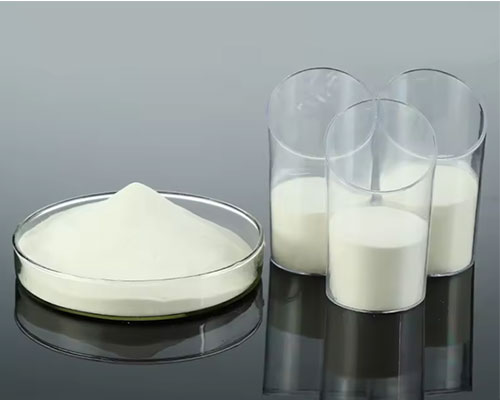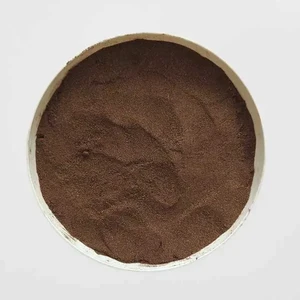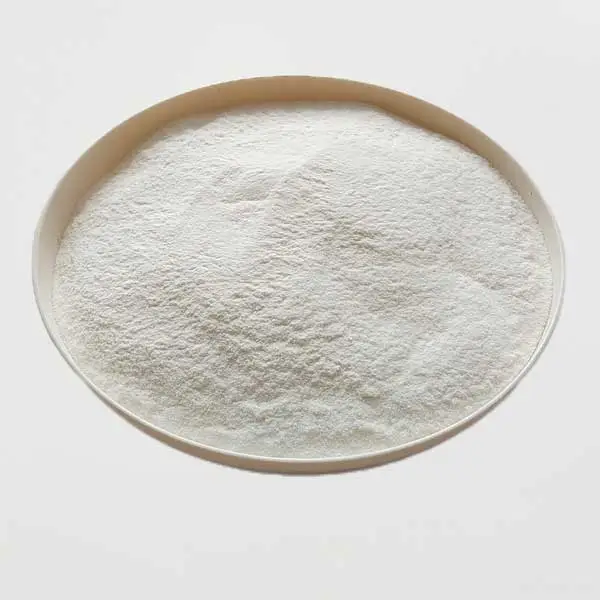Study On Different Molecular Structures Of Polycarboxylate Superplasticizer And Adaptability Of Concrete Cementing Materials
Adaptability of polycarboxylate superplasticizer with different structures and cement-based materials:

After the polycarboxylate superplasticizer is added to the cement slurry, part of it is adsorbed on the surface of the cement-based material to play its surfactant role, and the other part remains in the liquid phase to maintain the flow performance of the newly mixed slurry in the later stage. The role of polycarboxylate superplasticizer in cement-based materials is mainly manifested as adsorption on the surface of cement-based materials and dispersion on cement-based materials.
The adsorption capacity of polycarboxylate superplasticizer in cement slurry has a certain correlation with their side chain molecular weight. The adsorption capacity of polycarboxylate superplasticizer with large side chain molecular weight is small in cement slurry, mainly due to the strong steric hinsteric effect of side chain molecules, and the solvent water film formed by its long polyoxide ethylene chain will also shield its own charge amount and reduce its polarity. The comb structure with long main chain and short side chain is easier to bend, more polar points can be adsorbed by polycarboxylic acid macromolecules, and the probability of adsorption with the surface is higher.
The dispersion effect of polycarboxylate superplasticizer with different structures on cement-based materials is mainly as follows: short side chain and long main chain structure have the strongest dispersion effect, and short side chain and short main chain structure have the worst dispersion effect. Although the adsorption capacity of long side chain and short main chain structure is the smallest, the dispersion effect is stronger than that of short side chain and short main chain structure. This may be because the structure of long main chain and short side chain is a kind of ring adsorption, which has more adsorption points on the surface and covers more surface. The structure of long side chain and short main chain, although its adsorption capacity is small, also has good dispersion performance because of its huge molecular conformation. In summary, the dispersion effect of polycarboxylate superplasticizer does not entirely depend on the size of its adsorption capacity, and the molecular conformation also has a greater influence.
Study on adaptability of polycarboxylate superplasticizer with different structures and auxiliary cementing materials:
With the development of modern concrete technology, a large number of auxiliary cementing materials have been incorporated into concrete. The incorporation of these auxiliary cementing materials makes the compatibility between the already complicated admixtures and cementing components more complicated. The adsorption capacity of polycarboxylate superplasticizer with different structures is different in size, but the trend of adsorption capacity on the surface of different cementing materials is the same. Under the same dosage, the adsorption capacity of fly ash is high and the slag is low. This is mainly because the main composition of fly ash is amorphous or glassy silicon oxide, and there is a small amount of unburned carbon. Slag is formed by cooling and solidification of inorganic solvent minerals based on calcium oxide used for impurity removal in the process of metal refining. Their adsorption behavior also shows a certain difference, fly ash because it contains carbon will adsorb part of the water reducer, so the adsorption capacity of the whole system appears to be higher. As a water-quenched vitreous structure, slag will also adsorb a certain amount of water reducing agent on the surface, but its adsorption amount is less than that of fly ash.
From the perspective of the fluidity change of slurry, they all have the same trend, and they all show that the segregation bleeding point is advanced. Therefore, it can be considered that the dispersive adsorption effect of polycarboxylate superplasticizer on each gelling particle is similar, but the size is different. In other words, after the incorporation of auxiliary cementing materials, the law of this paste saturation point is also universal. The principle of this comb molecular structure determines that it is difficult to exist a polycarboxylate superplasticizer that can fully adapt to slag and fly ash.

Different molecular structures of polycarboxylate superplasticizer have a significant impact on their adsorption on the surface of concrete cementing materials. These studies are conducive to guiding scientific researchers to develop corresponding polycarboxylate superplasticizer according to different needs, and are also conducive to guiding admixture manufacturers to more conveniently select the parent polycarboxylate superplasticizer to meet customer needs.
Recommended Products
Related News About Construction Chemicals

 English
English 




